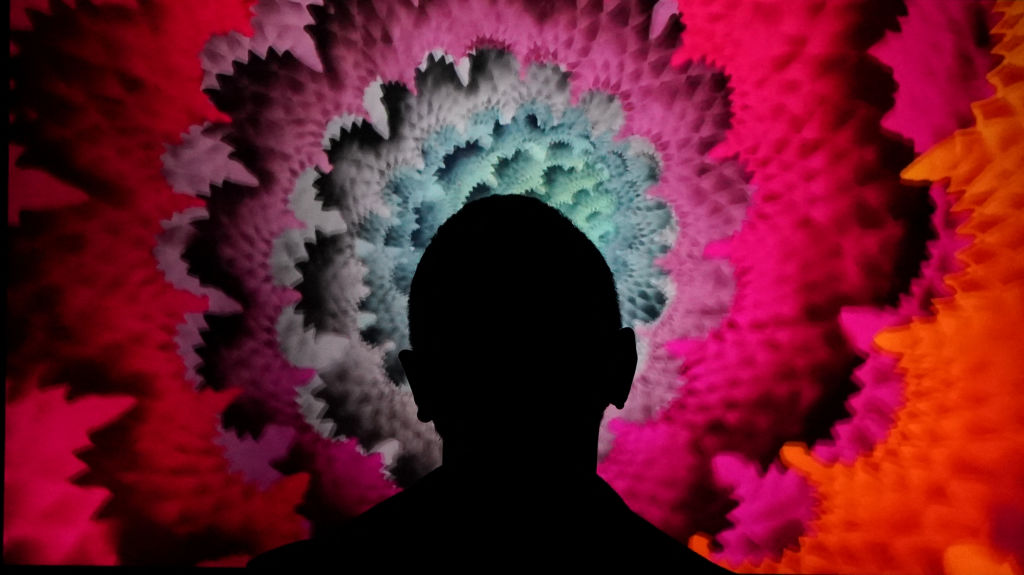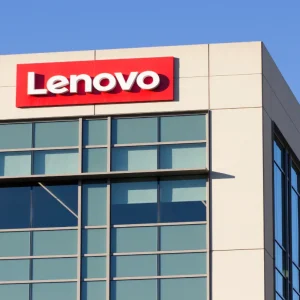
In the beginning was the presentation. Seven years ago, digital artist Kevin McCoy and tech entrepreneur Anil Dash mounted the stage at the Seven on Seven conference to explain their new invention, the ‘monetised graphic’. They proposed a new program containing metadata on any given object’s creation and ownership that would sit on the blockchain. The program – now more popularly known as a non-fungible token, or NFT – was effectively a concert ticket to the object, an additional layer to the object that didn’t lay claim to its ownership or copyright, but promised a new form of participation with it. The future of NFTs was born.
Dash and McCoy finished that presentation to polite applause and little uptake. It took another six years and the invention of a standard protocol on the Ethereum blockchain before NFTs began to spread in a serious way. By the end of 2020, tokens for digital art were being valued by cryptocurrency enthusiasts at hundreds of thousands of dollars. In March, that craze broke into the mainstream with the auctioning of Everydays: The First 5000 Days by Mike Winkelmann, otherwise known as Beeple. That work would sell for $69.3m.
By that point, a crowd of celebrities and sporting institutions had entered the NFT market. Some traded heavily on fan participation, including the NBA, which began selling NFTs of basketball video highlights. Some seemed to be just in it for the money – see Jack Dorsey’s sale of an NFT of his first tweet for $2.9m, or Kate Moss flogging NFTs of videos where she’s sleeping – while others, like model Emily Ratajkowski, harnessed the craze to provoke a discussion about image rights.
Underneath the froth, though, were artists and musicians who see the medium as an important new revenue stream that, with the right smart contract, could guarantee secondary resale royalties long after the NFT has been minted. Both groups had been sidelined in their own industries, which are dominated by closed networks of art dealers and streaming services, respectively. NFTs promise a way to connect with their audiences directly. Suddenly, digital artists from Brazil to Australia and the Philippines were reaping the whirlwind of interest, while musicians began selling tokens worth far more than their fees for gig appearances or streaming royalties.
For Tom Flynn, the emergence of NFTs is an inflection point in how we participate in creativity. “We’re seeing the apotheosis of ownership in the NFT,” says the art historian and founder of Flynn & Giovani Art Provenance Research. “All you own is the fact that you own it. You don’t own the thing. You just have the concept that you own it. That seems, to me, to be very radical.”
We’re seeing the apotheosis of ownership in the NFT. All you own is the fact that you own it. That seems, to me, to be very radical.Thomas FlynnFlynn & Giovani Art Provenance Research
It is also, as Flynn acknowledges, a medium that could be built on a house of sand. The notion that anything can be minted as an NFT – from the Brooklynite who successfully sold a token of his own flatulence, to numerous examples of third parties tokenising works without the consent of the original artist – is testing the inherent value of the instrument, and, for some, points towards a bubble market from which the medium might never recover. Others, meanwhile, have argued that the hyperlinks NFTs use to point to their associated pieces may be susceptible to ‘link rot’, and, therefore, will be unavailable in several years’ time.
Will NFTs remain useful for artists in the future? Flynn remains undecided. “There’s a gold rush,” he says. “It’s like El Dorado all over again. Everyone’s thinking this is the keys to the kingdom, and it’s not. It’s very, very early days.”

House of sand
David Gerard is less equivocal. NFTs, says the author and crypto-sceptic, are little more than the plaything of Bitcoin and Ethereum promoters. “These are literally the same people who were previously selling ICOs and altcoins,” says Gerard. “I don’t think this is the way forward for artists.”
This is partly down to a question of definition. An NFT, says Gerard is only “a ticket saying you participated in an interesting event,” a notion that is only commanding value because the demand for NFTs per se is currently so strong. Why that’s the case isn’t down to any philosophical shift about how we define ownership, he argues, but the fact that crypto-promoters are slapping millions of dollars on to individual pieces to artificially boost the market.
This happened in plain sight with the sale of Everydays, says Gerard. “It was an attempt by MetaKovan to promote the concept of NFTs,” he argues, referring to an investigation by Amy Castor into the crypto-entrepreneur’s history with a defunct Canadian coin exchange, and attempt to break up Beeple’s work into its own cryptocurrency. “That’s why he dropped a massive pile of Ether on this particular JPEG.”
Other flaws with NFTs, says Gerard, include the massive environmental cost associated with minting them, a potential PR disaster for young artists and bands. They also constitute a major opportunity for money launderers, he says. “I’m pretty sure some of those guys are looking closely at the NFT market and seeing if they can do the same tricks,” says Gerard. “If you look at transactions on the NFT sites, you’ll see some deals that make you go, ‘That can’t possibly be a real deal.’”
Meanwhile, there are structural deficiencies that could prove troublesome for artists if NFTs persist in their current form. One is that buyers often assume that they’re acquiring not just the token, but also ownership rights and copyright over the associated asset. “The challenge, I think, that will happen as the froth begins to subside is people starting to ask questions like, ‘What did I spend all that money on? What do I actually get?’” says Scott Thiel, a legal expert on NFTs at DLA Piper.
This could conceivably lead to civil cases being mounted against individuals selling NFTs where the conditions of sale are, at best, unclear, while those tempted to fractionalise newly-bought NFTs into more tokens, says Thiel, usually don’t realise that the act is subject to securities regulations. Sellers may also be inclined to pursue legal action against individuals who tokenise their assets without permission, explains Andres Guadamuz. He should know. A senior lecturer in intellectual property law at the University of Sussex, Guadamuz has minted ten different NFTs in this way.
As the researcher explains in a series of articles, the ability to mint someone else’s artwork constitutes a serious threat to an NFT’s claim to scarcity. Legal protections for artists against this remain theoretical. What is clear is that NFTs minted in this way do not infringe copyright in a broad sense, since the token doesn’t make any ownership claim over the object.
One exception to this, though, lies in something known as ‘communication to the public’, a type of violation in US, UK and EU copyright law wherein a link to a piece is published for commercial gain without the permission of the artist. If that’s the case, explains Guadamuz, “you may be sued successfully for copyright infringement”.
This has yet to be tested in court. Even so, “from a legal perspective, there’s almost nothing that people can do” to prevent third-party tokenisation, says Guadamuz. “You have to spend a lot of money pursuing someone for a result that may not be successful.”

The new middlemen
Kevin McCoy isn’t so worried. Sporting a tousled grey mane underneath a green baseball cap labelled ‘MATH’, the digital artist remains irrepressibly hopeful about the continued potential of NFTs. This is just as well. Two weeks after his interview with Tech Monitor, on 10 June, McCoy will auction Quantum, a fluorescently hypnotic GIF that lays claim to being the first such tokenised artwork in existence.
“There’s all kinds of issues and problems around platforms, and the emergence of a middle layer,” says McCoy. “Those things are real. But the day-to-day experience of people is that they have greater access to production and communication and distribution.”
In turn, argues McCoy, a new creative awakening has taken place, one that “blows through traditional aesthetic categories”. Flynn agrees, seeing precedents in the resulting explosion in the popularity of digital art in the Art Brut movement of the 1940s, and the provocations of conceptual artists from Marcel Duchamp onwards.
Even so, a hierarchy is taking shape that puts the lie to any argument that NFTs will vanquish middlemen from the creative industries. Most artists, after all, lack the technical knowledge to create unique tokens themselves, instead relying on third-party platforms to mint and sell their NFTs. Established artists and celebrities turn to Christie’s and Sotheby’s to publicise and auction their tokens. Those with less money to spend, meanwhile, turn to sites like OpenSea and Nifty Gateway to flog their wares.
Lawyers are also beginning to close ranks around NFTs. Worried that buyers may be confused at what they’re actually acquiring, sellers have commissioned disclaimers explaining precisely what and what is not included with an NFT. Guadamuz cites the recent sale of the NFT for ‘Charlie Bit My Finger’, an early YouTube hit. “It’s clear, to me, that they asked a lawyer for advice,” he says. “If you look at the terms and conditions of the sale, they’re not saying that you own the video. They’re saying you only own the NFT. You do not own any of the assets.”
That isn’t always the case, says Thiel. Transferring copyright through NFTs is possible, but it requires separate waivers and complex legal agreements to ensure that sellers are properly protected from civil actions. These kinds of services, however, constitute yet another barrier to entry for amateurs seeking to trade in NFTs. “It costs money to enter the space,” says Guadamuz. “And the market is already overheated. There are people that are making lots of money, but most of the people are not.”
NFTs are also unlikely to overcome the deep institutional antipathy towards publicity among mainstream art collectors, says Flynn. “There is a rump of the art market that is very discrete, very private, very confidential, that has nothing to do with this kind of thing, and isn’t interested in it,” says Flynn. These ultra-high net worth individuals “don’t want people knowing what they own. So, the notion of putting it on the blockchain would be completely anathema to them.”
The future of NFTs
McCoy is more optimistic. We are, he says, still in the earliest stages of the technical evolution of NFTs. While the system he pioneered may be vulnerable to link rot, he believes that sociocultural norms around the preservation of internet culture will continue to change for the better. “There will be things lost along the way, for sure,” says McCoy. “But I do think it’s a mistake to think that that’s going to derail the whole train.”
Guadamuz believes that the future of NFTs may lie partly in guaranteeing the existence of the works behind them on the blockchain. Right now, it is prohibitively expensive to upload anything more than a tweet on to Ethereum, but this may become cheaper to do once it converts to a new 'proof-of-stake' model, which promises to lower on-chain transaction fees significantly.
Another legacy that NFTs will leave behind, argues Thiel, will be in popularising the fractionalisation of not only digital art, but real-world objects. Doing so with real-world stakes of ownership will be the next great transformation. “They don’t even have to be NFTs,” he says. Instead, a client might choose to tokenise a painting or a wine collection into 10,000 pieces, like so many shares in a company. “All of a sudden, you’ve got a marketplace,” says Thiel, with the added advantage that it exists within an established regulatory framework for securities.
How long the market will value association with an artwork or a song through NFTs, rather than an explicit claim to it, is anyone’s guess. The next great test will take place on 10 June with the sale of Quantum. Axios estimates the work will sell for $7m.






